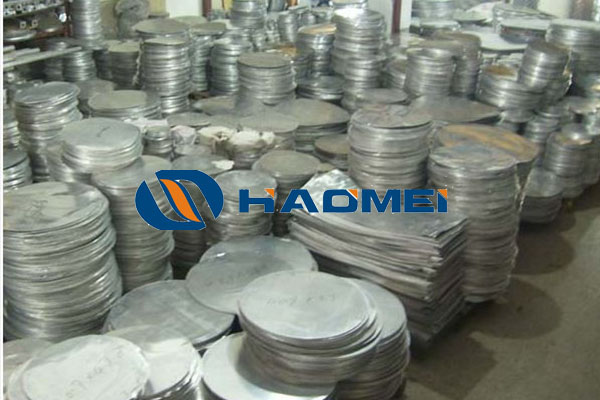Classification of aluminium discs circles by application
July 30, 2019
Aluminium discs circles are among the most popular aluminum products. The circles used to be divided by alloys such as 1050, 1060, 1070, 1100, 3003 and 5052 etc. With increasingly widened application scope, aluminium discs circles are now classified by usages, too. Here we discuss three of its main usages: cookware, container and lamp cover.
Aluminium circles are used for cookware because of their light weight and excellent heat conductivity. 1050, 1060 and 1070 are the mainstream alloys for low-end kitchen utensils like strainers, cooking pots and kettles. In some places of the world, pots are regarded as a fast consuming good, and people get new pots every two or three months. What they need are low price and fast cooking. Quality and cheap pots made of 1050 aluminium circles just meet these requirements.

Containers, especially battery and chemical containers are considered to be a big consumer of aluminium discs circles as well. Such products require aluminium discs of good tensile strength and corrosion resistance. Aluminium is well known for its light weight and good elongation. Its oxide is resistant to most corrosive elements, and it never gets rusty. This extends aluminium containers’ service life substantially.
Another popular end product, the lamp cover, takes advantage of aluminium circle’s light weight, good processing property and nice reflectivity. Usually hung from the ceiling, lamps must be light enough to reduce risk of falling down. Aluminium is the lightest of regular metals, including iron, copper and aluminium. Some aluminium circles are drilled into perforated lamp covers to create various designs. Others are simply made into hollow covers to keep light from the lamp to a given direction.
Light, corrosion resistant, heat conductive and reflective, aluminium discs circles are applied in various industries, saving cost and energy. Their application scope is still widening day by day.


 Nydia
Nydia
 Sales Manager
Sales Manager